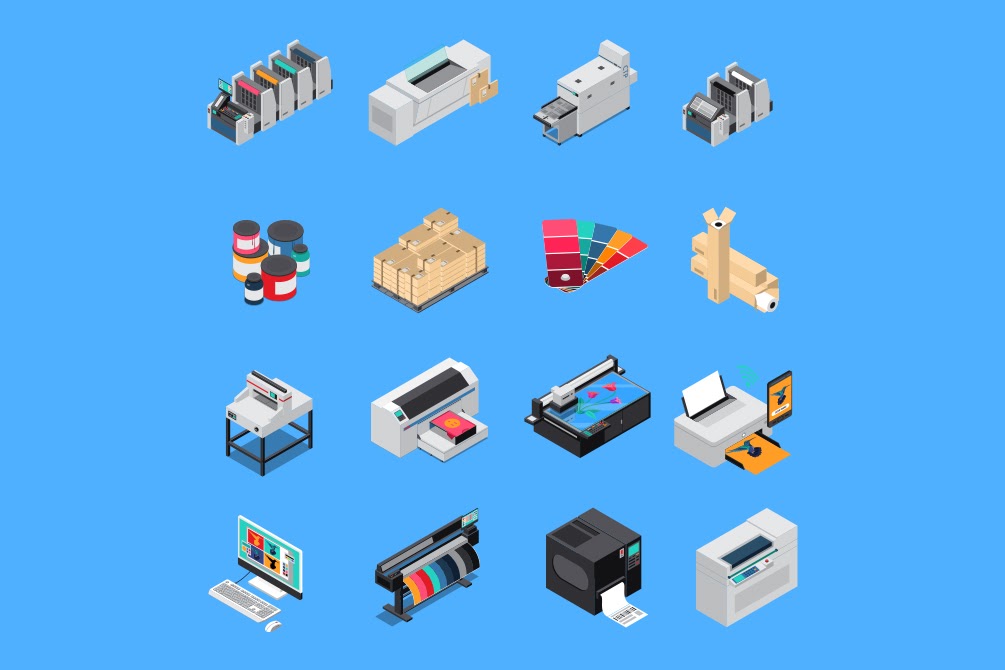Digital printing is no longer an exotic technology that we foresee in the future. It is one of the fastest developing segments of the print industry and has become mainstream nowadays. Technology and automation have empowered the printing industry of the 21st century. The global 3D printing industry is estimated to reach $34.8 billion by 2024.
Software and equipment are revolutionizing the digital print industry. This is because, with digital printing, companies can produce more work at lower costs. There are many other reasons too. For example, design flexibility, easy prototyping, customization, material efficiency, and viable low-volume production. However, the industry still needs to tackle some issues. 3D digital printing technology poses its own unique challenges. Here we have identified some 3D printing challenges that entrepreneurs must understand. Let’s have a look at it!
1. Slow Production Speed
The digital printing methods offer low-cost production, but the rate of production is often slow. This is one of the biggest 3D printing challenges. Speed matters a lot, especially for companies looking forward to large-scale production. Many current 3D printers used by industries still lag behind in terms of speed and efficiency compared to their traditional counterparts.
This is an obstacle for industries with mass production requirements. For industries such as automotive and consumer goods, the products need to manufacture and deliver the shortest time frame possible to maintain production efficiency.
Most manufacturers are looking for ways to make 3D printing faster and eliminate this digital printing industry challenge. Some have even developed systems that can help increase outturn while some are working to further improve the existing machines.
For example, EOS, a German manufacturer, is developing a Laser ProFusion technology to increase the output in Selective Laser Sintering (SLS) technology. The new 3D printer will contain around a million diode lasers as compared against 1-2 lasers currently. It will significantly accelerate the printing time. An Australian company, Aurora Labs, is also looking to enable metal 3D printing at a faster rate by implementing a powder bed fusion process.
2. Inconsistencies in Material
The inconsistency in materials is another major digital printing industry challenge. The material development of 3D printing is still in the early stages. Experts did not use to put much emphasis on material properties during the early years of 3D printing and prototyping.
Now, the material development process has accelerated tremendously. Large chemical companies are developing carbon-supported polymers that are as strong as their metal counterparts. Markforged, a manufacturer of composite 3D printing technologies, has developed several new materials, the latest being Onyx FR, which is the first flame-retardant composite material.
Hence the availability of materials is increasing. There still remains a lot of inconsistencies in the 3D printable materials. There is no standardized database of materials with proven parameters or specifications. Hence it is a challenge to achieve consistent materials for the 3D printing process.
3. Lack of Standardization
The 3D printing technology allows engineers to produce single items inexpensively. But the quality assurance is not always there. Only high-end machines produce goods that are inferior as compared to the traditionally manufactured ones. One of the reasons behind this is a lack of universal standards.
Experts at Deloitte notes that: “Many manufacturers have difficulty stating with certainty that parts or products produced via 3D printing—whether all on the same printer or across geographies—will be of consistent quality, strength, and reliability”. Without this standardization, there cannot be a process to judge the risk of uncertain quality of products. This could prove to be too costly in the long run. Hopefully, the American Makes & ANSI Additive Manufacturing Standardization Collaborative (AMSC) takes the necessary steps to end this uncertainty. Its mission is to frame consistent and industry standards and specifications in order to facilitate the growth of the 3D sector.
4. Manual Post Processing
The after-process of 3D printing requires some or the other type of post-processing to improve the mechanical properties, accuracy, and other things. The majority of these post-processing operations are manual processes and require skilled operators to perform key tasks.
This is not a big issue when 3D printing is used just for prototyping. But, for the end-part manufacturing process, scaling and automating, post-processing has become of the key importance. Using human labor for the post-processing of a prototype is cost-effective. However, when producing thousands of such 3D printed parts, an automation process becomes extremely necessary.
5. Limited Capabilities of Design Software
The designing part of the 3D printing workflow is not as easy as it seems. Industrial 3D and digital printing require significant design requirements and preparations. The model needs to get ready on the software before printing.
For the designing process, industries generally use Software like Computer-Aided Design (CAD) and Computer-Aided Engineering software. These software are not optimized for the 3D printing requirements, and hence, it complicates many things. Take the traditional CAD software for an example. It can be difficult to design components made with graded materials, model porosity, or create lattice structures. The 3D design process contains multiple steps, which need the use of separate and multiple software solutions for a single design.
For example, in a typical scenario, a designer would need to create a design model in the CAD system first. Then, convert it into a triangulated model to check the printability, optimize the structure to reduce weight, add support, and lastly run simulation. This process requires various programs, various software, and various file formats.
After running the simulation, if the results indicate failure, you’ll need to go back through all these steps and jump software to change some parameters, prevent it from failing and make the model printable. Hence the whole process is time-intensive and error-prone. Industry experts are trying to ease the burden of these 3D model preparations in multiple ways, but there’s still room for development.
6. Lack of Expertise
Lack of expertise is yet another digital printing industry challenge. Perhaps an important one. There is still a huge gap in 3D printing technology knowledge, its features, its capabilities, and how they are used.
Plus, there are not enough employees and experts who have the background to design, perform and operate the machines. As a result, businesses that could benefit from the technology are not willing to adopt it. They constantly struggle to develop a relevant business case or use case for 3D printing.
As 3D and digital manufacturing are yet to become common, companies must invest time and money in employee training for incoming and seasoned engineers. Universities, such as the Massachusetts Institute of Technology and the Georgia Institute of Technology, are preparing engineering students by launching 3D printing labs initiatives that deliver hands-on training.
7. QA Challenges
Part to part variation is often visible in the output of the printed designs. The reason for that is the consistency of the material. The final output that comes out of the system is not necessarily how you imagine it to be. Sometimes you may get the weakest part for what you have designed. This means that you’re not able to fully leverage digital technology.
Traditional CNC machining, injection molding, or casting are well-understood manufacturing processes. 3D printing gives a completely new approach to the industries producing manufacturing parts. It also brings in new flaws that are absent in traditional manufacturing. This leads to variations in the part quality from design to design.
8. Lack of Digital Infrastructure
Industries need the right digital infrastructure to manage the 3D printing operations efficiently. Many companies are establishing infrastructure by using IT solutions. These solutions were developed keeping the traditional manufacturing requirements in mind. Hence, they are not fit for 3D printing workflows.
To solve this issue, companies have been developing workflow management software specifically for 3D printing, which helps manage the entire workflow. This ensures that companies can have a centralized production planning and monitoring system that enables them to track the quality of the parts and view designs, allowing great traceability and flexibility. It makes day-to-day business processes efficient. Finally, it helps to synchronize data between systems, making the digital manufacturing environment much simpler.
The Ever-Evolving Industry
Here we have shed light upon just eight 3D printing challenges that many industries are facing. As a young technology, digital and 3D printing has many challenges, and the industry is ready and equipped to overcome them. Over the last decade, the industry has made a huge leap forward by developing better and faster printing technology, creating more materials and automation solutions. Do your businesses utilize manufacturing solutions? What challenges do you face? Let us know!
All product and company names are trademarks™, registered® or copyright© trademarks of their respective holders. Use of them does not imply any affiliation with or endorsement by them.









Follow with us